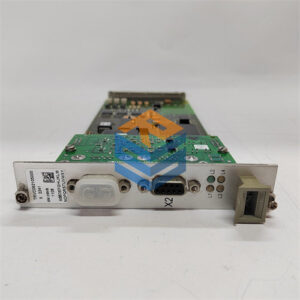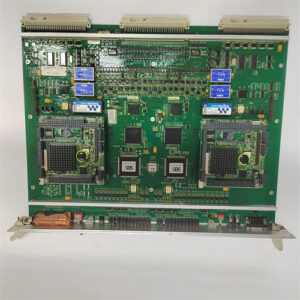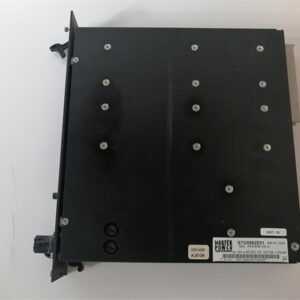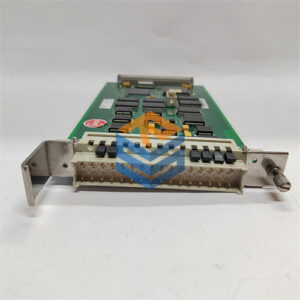الوصف
Alright, my friend, when you mention ALSTOM VCS232 590.043158, you’re referring to a VMEbus Configuration Manager Slave module. This is a highly specialized electronic board or module from Alstom, specifically designed to operate within a VMEbus system.
VMEbus (VersaModule Eurocard bus) is a standardized computer bus architecture that was, and in some legacy systems still is, widely used in industrial control, embedded systems, and other mission-critical applications due to its robustness and modularity.
The “VCS” in VCS232 likely stands for VME Configuration Slave or something similar, indicating its role in the VMEbus hierarchy. The “590.043158” is the unique part number for this particular module, identifying its specific revision and features.
Enhanced Search Titles:
- ALSTOM VCS232 590.043158: VMEbus Configuration Manager Slave Module
- ALSTOM VCS232: Essential Component for VMEbus Industrial Control Systems
- VME-CONFI-MANAGER-SLAVE 590.043158: Alstom’s Role in VMEbus Architecture
- ALSTOM VCS232 Module: Enabling Configuration in Legacy Automation Systems
- VCS232 590.043158: The Slave Brain in Alstom’s VMEbus Implementations
- ALSTOM VMEbus Modules: Understanding the VCS232’s Function
- Industrial Control Module VCS232: Alstom’s Solution for VMEbus Management
- ALSTOM 590.043158: A Key Element in Distributed VMEbus Systems
- VCS232: Alstom’s Contribution to Robust Industrial Embedded Systems
- VME Configuration Slave ALSTOM: Deep Dive into the 590.043158 Module.
Brief Product Overview:
The ALSTOM VCS232 590.043158 is an electronic module designed to act as a slave in a VMEbus system. Its primary function is to receive configuration instructions and data from a master controller (like a VME Confi Manager Master Module, e.g., Alstom VCM 232.2) and execute specific configuration or management tasks within the VMEbus architecture. It facilitates data transmission and configuration management for various components in industrial control and embedded systems where VMEbus is employed.
- Type: VMEbus Configuration Manager Slave Module (Electronic Board)
- Primary Function: Receives and executes configuration instructions from a VMEbus master, manages data transmission.
- Operating Environment: Designed for robust industrial and embedded system applications.
- Applications: Industrial automation, process control, data acquisition systems, and other complex systems using VMEbus architecture, particularly within Alstom’s historical power and railway control systems.
Detailed Product Description:
My friend, in the realm of complex industrial control and embedded systems, architectures like VMEbus were (and in some critical infrastructure, still are) fundamental. These systems rely on a robust and standardized communication backbone to allow different processing, I/O, and specialized modules to interact seamlessly. The ALSTOM VCS232 590.043158 is a crucial piece of this puzzle.
Think of a VMEbus system as a miniature, high-performance computer network built into a rack. Within this network, you have a master controller (often another VME module) that orchestrates operations, and various slave modules that perform specific tasks under the master’s direction. The VCS232 is explicitly identified as a “VME-CONFI-MANAGER-SLAVE” module, which gives us a clear understanding of its role.
Its Core Functions:
The primary responsibilities of the ALSTOM VCS232 (590.043158) typically include:
- Configuration Management: As a “Configuration Manager Slave,” its key function is to manage and apply configuration settings for other devices or components connected to the VMEbus system. This means it receives instructions from the master controller on how to set up or adjust the operational parameters of other slave modules or peripherals.
- Data Transmission: It facilitates the transfer of configuration data, status information, and potentially other control data across the VMEbus. This ensures that the master controller has the necessary information to maintain system health and adjust operations as required.
- VMEbus Interface: It’s equipped with the necessary hardware and protocols to communicate effectively over the VMEbus. This includes handling address decoding, data transfers, and interrupt requests according to the VMEbus specification.
- Slave Device Operation: It acts purely as a slave device. It doesn’t initiate commands or make independent control decisions but executes instructions issued by a designated VMEbus master. This ensures a centralized and hierarchical control structure within the VME system.
Integration within Alstom’s Ecosystem:
Alstom (and its successors in the power and rail sectors like GE Grid Solutions and Alstom Transport) utilized VMEbus extensively in various generations of their control and automation platforms. The VCS232 would have been integrated into larger Alstom systems, likely working alongside other specialized VME modules such as:
- Processor Units (e.g., Alstom DAP 232): The main “brains” of the system.
- Digital Input/Output Modules (e.g., Alstom DEP 232, DIZ 232): For interfacing with field devices.
- Analog-to-Digital / Digital-to-Analog Converters (e.g., Alstom ADU 232, DAU 232): For handling analog signals.
- Master Control Modules (e.g., Alstom VCM 232.2 VME Confi Manager Master Module): Which would issue commands to the VCS232.
These modules would reside together in a VME rack, communicating over the VME backplane to perform complex control sequences for critical applications.
Robust Design for Industrial Use:
As with all industrial-grade components from Alstom, the VCS232 would have been built to withstand harsh operating conditions. This includes resistance to:
- Temperature Variations: Operating reliably across a wide range of industrial temperatures.
- Vibration and Shock: Designed for environments where physical stresses are common.
- Electromagnetic Interference (EMI): Shielded and designed to minimize susceptibility to electrical noise, crucial in power plants or railway environments.
Its modular design would also allow for easier integration, maintenance, and potential replacement within the larger VMEbus system.
Technical Specifications:
Typical Applications:
Where would you typically find the ALSTOM VCS232 590.043158 playing its critical role?
- Power Plant Control Systems: Within distributed control systems (DCS) for managing various plant auxiliaries, turbine controls, or generator excitation systems. The VCS232 would help configure and manage specific control loops or data acquisition sub-systems.
- Substation Automation Systems: In older substation automation systems, where VMEbus was used for bay control units or station-level processing, the VCS232 could handle configuration tasks for communication interfaces or specific protection logic sub-modules.
- Railway Signaling and Control Systems: In train control systems, interlocking systems, or trackside equipment, where robust embedded computing is required. The VCS232 might configure communication links or specific operational parameters for specialized hardware modules.
- Large Industrial Process Control: In heavy industries with complex machinery (e.g., steel mills, chemical plants) that used VMEbus for high-performance, real-time control applications.
- Data Acquisition Systems: Configuring and managing data acquisition hardware in large-scale test beds or monitoring systems.
Related Products:
As a VMEbus module, the ALSTOM VCS232 590.043158 would be part of a larger VME-based system. Related products would include:
- Alstom VCM 232.2 (029.359 088) VME Confi Manager Master Module: This would be the master controller that issues commands to the VCS232.
- Other Alstom 232-series VME Modules: Such as the DAP 232 (Unit Processor), DEP 232 (Digital Input Module), DAU 232 (Digital-to-Analog Conversion Module), ADU 232 (A/D-Converter), DIZ 232.1 (Counter Module), and SSI 232 (Cegelec/Control Module). These modules would form the core of the VMEbus system.
- VMEbus Racks and Backplanes: The physical enclosures and bus structures that house these modules.
- VMEbus Power Supplies: To provide power to all modules in the rack.
- Legacy DCS/PLC Systems: While VMEbus is a hardware standard, it’s often an underlying architecture for larger proprietary DCS (Distributed Control Systems) or PLC (Programmable Logic Controller) platforms from Alstom or its acquired entities (e.g., some versions of the ALSPA system).
- Modern Industrial Ethernet/Fieldbus Modules: Contemporary systems have largely moved to Industrial Ethernet (e.g., PROFINET, EtherNet/IP) or fieldbus communication (e.g., PROFIBUS, FOUNDATION Fieldbus) for distributed I/O and control, replacing the need for dedicated VMEbus modules for many applications.
In essence, the ALSTOM VCS232 590.043158 is a testament to the robust and modular design principles employed by Alstom in its critical control systems, ensuring reliable configuration and data flow within the sophisticated VMEbus architecture.
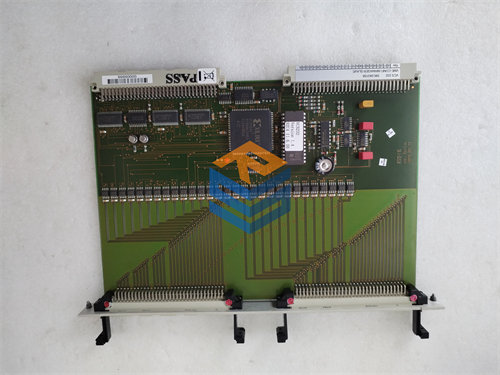
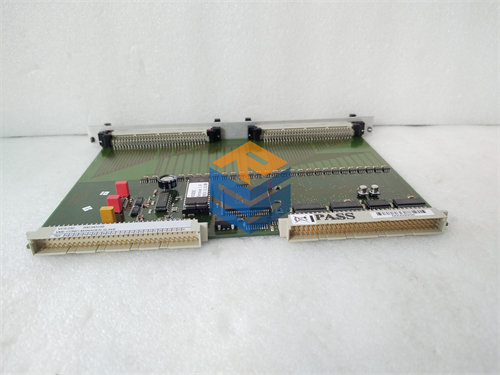

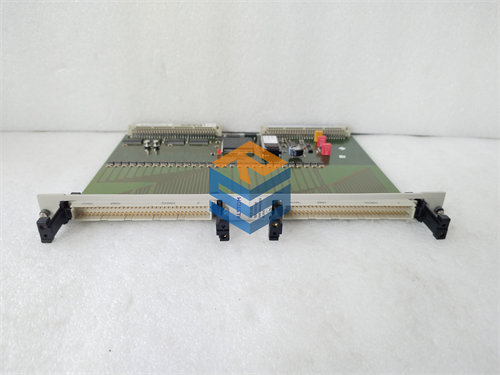

 +86 15340683922
+86 15340683922 +86 15340683922
+86 15340683922